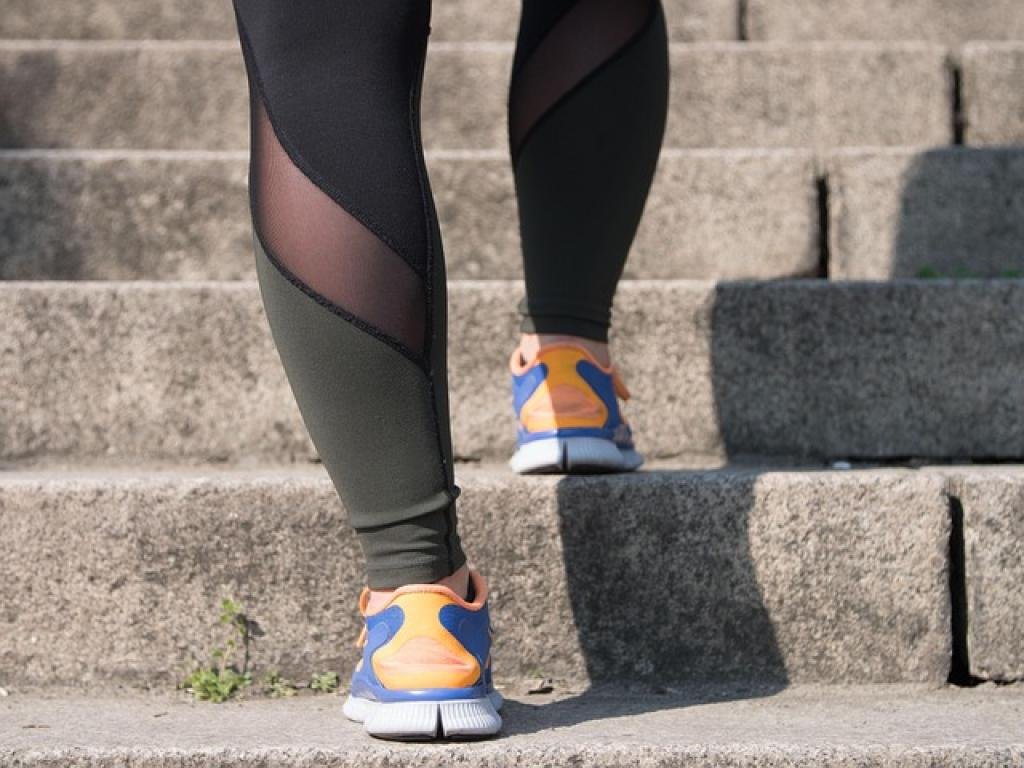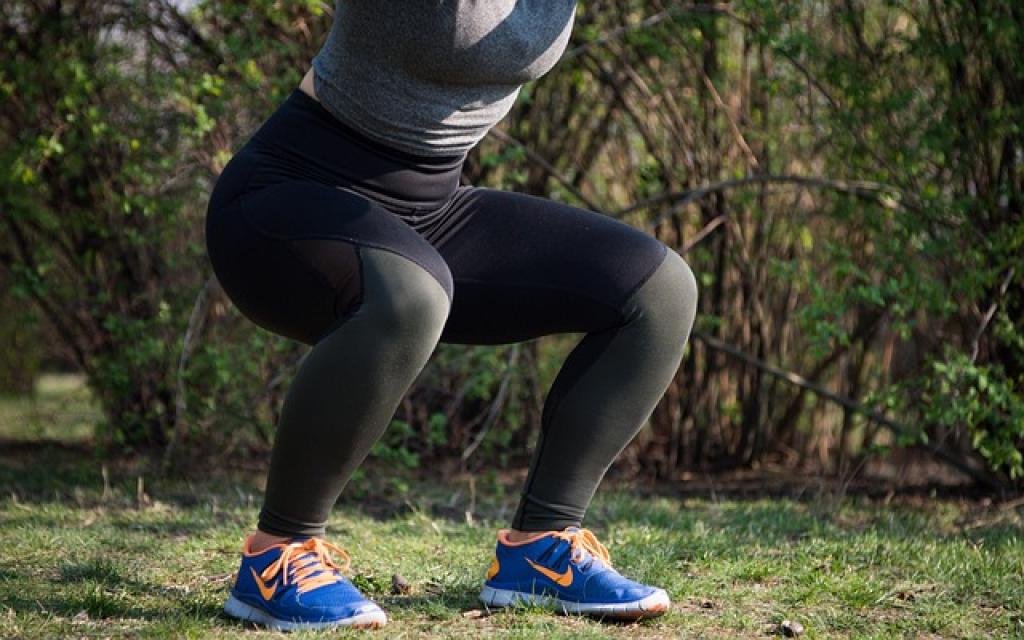We independently test and review fitness products using a research-based approach. If you buy through our links, we may earn a small commission at no extra cost to you. Read our Disclosure
Ever wonder if there’s a quicker way to burn fat without spending countless hours on a treadmill? Say hello to High-Intensity Interval Training (HIIT), your express ticket to efficient fat loss and improved fitness in less time than it takes to watch your favorite show.
HIIT isn’t just a passing fitness fad; it’s a powerful, science-backed workout method that’s designed for everyone—from workout rookies to seasoned gym-goers. With its magic mix of short bursts of intense effort and brief recovery periods, HIIT helps torch calories long after you’ve left the gym.
Incorporating HIIT into your routine doesn’t have to be complicated or daunting. This guide will demystify HIIT and walk you through everything you need to kickstart your journey. Get ready for sweat-dripping workouts that bring results without taking over your life.
Whether you’re after a trimmer waistline, more energy, or just want to shake up your routine, HIIT might just be your new best friend. Let’s dive in and uncover how you can get the most out of this powerhouse workout!
What is HIIT and How Does It Work for Fat Loss?
High-Intensity Interval Training, or HIIT, is like a fitness lightning bolt. It’s all about pushing your body to the max in short, intense bursts, followed by brief rest or low-intensity periods. This killer combo not only keeps your heart racing but also kicks your metabolism into high gear.
The secret sauce of HIIT lies in how it challenges your body. During those short, sweaty bursts, you tap into anaerobic energy, burning more calories in less time. But the magic doesn’t stop when you do; HIIT also triggers the afterburn effect, scientifically known as excess post-exercise oxygen consumption (EPOC). This means your body continues to burn calories at an elevated rate even after you’ve hit the showers.
HIIT is incredibly versatile and can be molded to fit your preferences and fitness level. Whether it’s sprinting, cycling, or bodyweight exercises, you can customize your workouts to keep things exciting. Plus, HIIT’s flexibility makes it simple to squeeze into even the busiest of schedules.
Effective fat loss doesn’t have to involve endless cardio sessions. With HIIT workouts, you’ll achieve a leaner physique and a healthier heart, all while reclaiming valuable time in your day.

Benefits of HIIT Workouts for Burning Fat
Ready for the good news? HIIT workouts are jam-packed with fat-burning benefits that go beyond just whittling your waistline. Let’s break down why HIIT is such a game-changer.
First off, HIIT slashes workout time without sacrificing effectiveness. Just 20-30 minutes of HIIT can deliver the same, if not better, results as a lengthy cardio session. This efficiency makes it perfect for fitting into your busy life.
Next, HIIT workouts are known for boosting your metabolism. By engaging in high-intensity bursts, you increase your muscle’s need for energy, which means more calories burned both during and after your workout. And who doesn’t love the idea of burning calories while binge-watching Netflix afterward?
But there’s more than meets the eye: HIIT also helps improve insulin sensitivity, meaning your body is better at using carbohydrates for energy rather than storing them as fat. Over time, this can lead to a leaner, more toned physique.
Lastly, HIIT can transform your body’s endurance and strength, upping your overall fitness game. As your body adapts, you’ll perform better in both cardio and strength exercises, making everyday tasks feel like a breeze.
Ready to jump on the HIIT train yet? Your body will thank you for it!
Structuring Your HIIT Routine for Maximum Fat Loss
Crafting the perfect HIIT routine is all about balancing intensity with rest to spark that all-important fat burn. The key is short, powerful bursts of effort paired with recovery. But how exactly should you structure it?
Start by selecting exercises that target different muscle groups for a holistic approach. This could be a mix of cardio moves like sprinting or cycling with bodyweight exercises such as burpees or mountain climbers. By mixing it up, you keep your body guessing—and the fat burning.
A typical HIIT workout might be composed of 20-30 seconds of high-intensity activity followed by 10-15 seconds of rest. Repeat this cycle for 15-20 minutes, aiming for 3-5 different exercises within each session. As you progress, vary the intervals to challenge your body further.
To avoid plateaus, ensure you’re increasing intensity or changing exercises regularly. Try varying your speed, increasing the load with weights, or decreasing rest periods as your fitness improves.
Remember, every HIIT session begins with a warm-up and ends with a cool-down to prepare your body for the workout and facilitate recovery afterward. Consistency is key, so aim for three sessions a week to see noticeable results. Happy sweating!
Common Mistakes to Avoid When Doing HIIT for Fat Loss
Jumping into HIIT with enthusiasm is great, but avoiding common pitfalls is crucial to ensure you’re not just breaking a sweat but actually burning fat effectively. Let’s highlight a few trip-ups to steer clear of on your HIIT journey.
Skipping Warm-Up or Cool-Down
First up, skipping warm-ups or cool-downs. Diving straight into high-intensity moves without preparing your muscles is a fast track to injury. Similarly, skipping the cool-down can leave your body stiff and sore, hampering recovery.
Overdoing It
Another classic mistake is overdoing it. HIIT is intense by design, so doing it every day without adequate recovery rides a thin line toward burnout or injury. Stick to a balanced schedule that allows your muscles to recover and regenerate.
Ignoring Form and Technique
In a rush to ramp up the intensity, it’s easy to neglect proper form. This not only reduces the workout’s effectiveness but also increases injury risk. Prioritize correct techniques, even if it means slowing down slightly.
Remember, quality trumps quantity, so focus on executing each movement effectively. By avoiding these mistakes, you’ll keep your body safe and on track toward noticeable fat loss results. Keep these tips in mind and make every HIIT session count!
How to Track Progress and Results with HIIT
Tracking your progress with HIIT is key to staying motivated and ensuring your workouts are effective. But how do you know if you’re on the right path?
Setting Clear Goals
Start by setting clear, achievable goals. Whether it’s losing inches off your waist, upping the number of burpees you can do in a minute, or improving your recovery time between intervals, having tangible goals makes it easier to track progress.
Regularly record your workouts, noting the exercises, duration, and intensity. This helps you spot trends, identify areas needing improvement, and maintain accountability. Tech-savvy options like fitness apps can add a fun and useful dimension to tracking.
Another effective method is taking regular body measurements and photos. Since HIIT can improve muscle tone and burn fat, the scale might not always reflect your hard work. Photos and measurements provide a more complete picture of your body’s transformation.
Keep an eye on your energy levels and general fitness improvements. Are everyday activities getting easier? Are you feeling more energetic? These non-scale victories are important indicators of progress too.
Celebrate milestones, big or small, to keep your motivation high and make tracking progress a rewarding experience. Keep pushing forward, and watch as your dedicated HIIT routine pays off!
Best Practices for Combining HIIT with a Healthy Diet
Pairing HIIT with a healthy diet is like supercharging your results, maximizing fat loss, and boosting overall wellness. Here’s how to blend these two for optimal impact.
First, fuel your body with nutrient-dense foods. Focus on a balanced intake of lean proteins, healthy fats, and a variety of fruits and vegetables. Protein, in particular, helps repair and build muscles after intense workouts, so ensure you’re getting enough to support recovery.
Stay hydrated. Water is essential in keeping your energy levels up during HIIT and aiding in muscle recovery afterward. Hydration also supports your metabolism, which is key in any fat-loss regime.
Timing your meals can also enhance your HIIT performance. Have a small, light meal about 30-60 minutes before your workout, focusing on easy-to-digest carbs and some protein to fuel your high-intensity efforts.
Following your workout, aim for a nutrient-rich meal to replenish glycogen stores and aid muscle recovery. Think along the lines of grilled chicken with sweet potatoes and veggies, or a protein smoothie packed with fruits and leafy greens.
Don’t forget to listen to your body. Adjust your diet according to your energy needs and how your body responds to different foods to find what works best for you. The right nutrition will complement your HIIT efforts and enhance your fat-burning journey.
Incorporating Recovery and Rest Days in Your HIIT Training
Recovery and rest days are crucial elements of a successful HIIT routine. They are not just days off, but vital opportunities for your muscles to repair, grow stronger, and prevent overtraining. So, how can you incorporate them effectively?
Firstly, aim for at least one to two rest days per week, depending on your fitness level and HIIT intensity. These days should be free of structured exercise to give your body a break from the high demands of HIIT.
On recovery days, consider engaging in light activities such as walking, gentle yoga, or stretching. This can keep your body moving without the stress of intense workouts, helping to increase blood flow and reduce muscle stiffness.
Listening to your body is important. If you’re feeling fatigued or experiencing any nagging soreness, it’s a signal to slow down and allow for additional recovery time. This prevents burnout and reduces the risk of injury, ultimately contributing to more successful and sustained fat loss.
Remember, rest and recovery aren’t signs of slacking—they’re part of the strategy for building a resilient and well-functioning body. By making them a regular part of your HIIT routine, you set the stage for continued improvement and long-term success.
Conclusion: Achieving Sustainable Fat Loss with HIIT
In embarking on your HIIT journey, you’re not just committing to workouts; you’re embracing a lifestyle change that promotes sustainable fat loss and improved wellness. As you’ve learned, the beauty of HIIT lies in its efficiency—delivering maximum results in minimal time.
By understanding the fundamentals and setting realistic goals, you lay a strong foundation for success. Tracking your progress keeps you motivated and shows tangible evidence of your hard work, while integrating a balanced diet supports your training from within. After all, nutrition is as critical as sweat in your quest for a healthier self.
And another thing to keep in mind is that, incorporating recovery and rest days into your routine ensures long-term sustainability. They’re as essential as the workouts themselves, allowing your body to heal and grow stronger, thus preventing burnout and injuries.
HIIT can be a powerful ally in your fat loss journey, but the key is consistency and balance. Listen to your body, celebrate small victories, and continuously adapt your routine as you build strength and endurance. Like any worthwhile effort, patience and persistence are essential.
In conclusion, achieving sustainable fat loss with HIIT is about commitment and embracing a holistic approach to fitness. By blending high-intensity workouts with supportive nutrition and necessary rest, you unlock the potential for lasting change. So, lace up those sneakers, fuel up with nourishing foods, and let every drop of sweat contribute to the healthier you in the making. Here’s to taking control of your fitness journey with HIIT and transforming not just your body, but your entire lifestyle. Keep going—you’ve got this!



